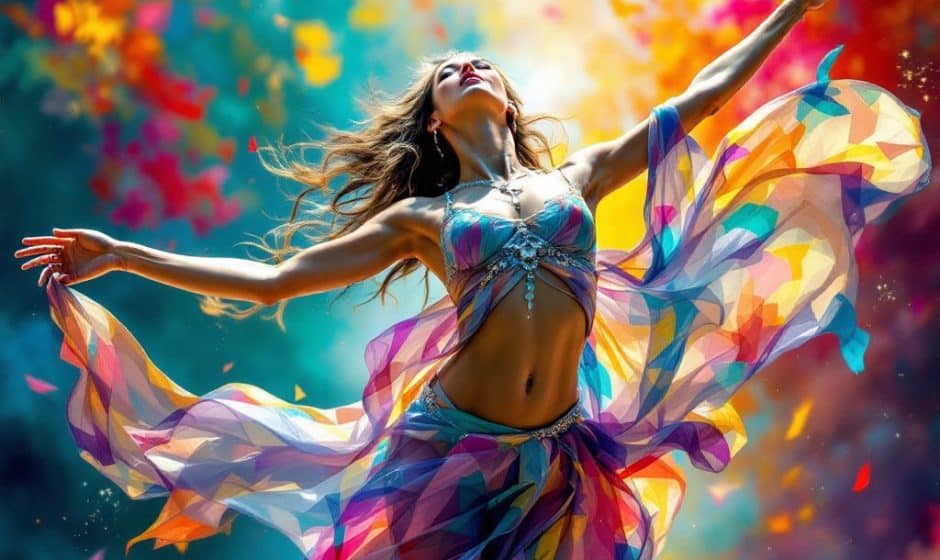Have you ever found yourself watching a dancer and feeling like they possess some secret, magical force? They move with such confidence, such fluidity—as if they’re not just in sync with the music but in complete harmony with their bodies, and maybe the universe, too. Here’s the big question: how do they do it? What’s their secret to such seamless dance movement?
Spoiler alert—it’s all about finding your flow. When we talk about “flow” in dance, we’re diving into more than just choreography. Flow is about that beautiful state where you’re not overthinking every move but letting it happen naturally. Let’s tumble down this rabbit hole together to unlock the magic of flow in your dance moves.
Why Does Flow Matter in Dance?
Flow isn’t just a fancy term thrown around by dance instructors. It plays a pivotal role in how relaxed, trustworthy (yes, trustworthy!), and connected your dance feels—not just to your audience, but more importantly, to yourself. At the core of this flow is something fascinating called hormone regulation.
When you dance, your body releases all sorts of hormones, like endorphins and dopamine. These chemicals do amazing things—they lighten the mood, improve focus, and ease anxiety. In short, your brain is chemically set up to thrive on movement. This cocktail of feel-good hormones keeps you in sync, tapping into a natural rhythm that feels good to you and everyone watching.
Finding Your Groove: The Essentials
We often think of legendary dancers as born with rhythm seeping through every pore, but the truth is, anyone can discover their flow. It’s not just reserved for pros! You can unlock it with consistency, openness, and a sprinkle—okay, maybe a generous helping—of patience.
1. Start by Listening to Your Body

Alright, confession time: most of us listen to music on the surface level. We appreciate it. Sure, it gets our feet tapping. But, do we really feel it? Here’s a little challenge: next time you put your headphones on, close your eyes. Notice how your chest might rise and fall with the tempo, or how your fingers might twitch on their own. That’s your body sending you signals. Don’t ignore them.
Dance health is closely tied to this kind of bodily awareness. It’s about recognizing your body’s needs and limits, allowing for growth without pushing too hard. Once you start tuning in, you’ll kickstart the process of regulating your body’s hormones more effectively.
2. Embrace Imperfection
Let’s kick perfection to the curb—yup, easier said than done, right? But hear me out. Every stumble actually gears you toward better hormone regulation. It literally promotes growth by helping your system refine what’s needed and what’s not. When you’re not stuck aiming for perfect movements, you’re more open to experimentation and more in tune with your own style, eventually finding your unique flow.
3. Slow and Steady
Imagine a stately tortoise. No matter how slow, each step is deliberate and carefully placed. In a fast-paced world, slowing down can be surprisingly effective. Focusing on slow, deliberate movements lets you hone in on the dynamics of flow without overwhelming your body or mind with rapid speed.
In training sessions, amplify the power of slow. Dance in slow motion to refine gestures and transitions, relieving pressure off quick perfection and letting your body learn the intricacies of each move.
4. Emphasize Breathing
Don’t laugh, but try this for a moment: exhale deeply right now—clearly a longer, deliberate breath. Feels more peaceful, right? Breathwork is a secret ingredient in dance movement that enriches the harmony between mind and body. Regular, full breaths can stabilize your nervous system and, yes, aid your hormone regulation.
Incorporate pre and post-dance breathing exercises. Utilize the simple technique of inhaling through the nose for four counts, holding for four, exhaling for four, and holding the exhale for another four—known as box breathing.
Steps To Define Your Dance Flow

Now that you’ve felt the vibe of the flow concept, let’s translate this knowledge into tangible steps! Here’s a nifty flow move process you might want to try on your journey to dance nirvana:
Structured Flow Move Guide
| Step | Action | Purpose |
|---|---|---|
| 1 | Warm-Up Stretch | Preps body, helps prevent injury, starts hormone flow. |
| 2 | Basic Routine | Don’t underestimate it – build foundation confidence. |
| 3 | Intuitive Dancing | Freestyle to explore new moves; let your body ‘speak’. |
| 4 | Focused Practice | Choose one tricky move & repeat under different tempos. |
| 5 | Cool Down | Encourages muscle ease, supports sound hormone regulation. |
**Warm-Up Stretch**: Begin with stretches targeting major groups to ease the body into the dance session. This step shouldn’t be skipped. It minimizes injury risk and begins circulating those delicious, feel-good hormones.
**Basic Routine**: Work through a set sequence that serves as your dance baseline. Confidence starts here, as you settle into a comfortable rhythm bolstering other explorations.
**Intuitive Dancing**: Step away from the scripted. Allow anything—anything at all—to happen. This spontaneous style not only shakes off stiff limits but lets hormone freedom actively develop within dance health.
**Focused Practice**: Pick one tricky dance move. Practice under diverse beats or speeds—this enriches your brain’s skill set, deepening mind-body connections. It’s how strength is built.
**Cool Down**: Don’t skip winding down! Focus on connecting back with your body’s signals. Yoga or static stretches strengthen the practice, reveal where you’re sore or loose, and support hormone regulation post-dance.
Common Flow Mistakes to Dodge

Embarking on your dance flow journey won’t happen without a few bumps. But avoiding common missteps can streamline the transition from clunky to sincere movement:
- Overthinking: Overplanning kills spontaneity. Flow thrives on the body acting in synergy with the mind. Dance authenticity gets lost when you’re stuck plotting every step.
- Ignoring Pain: Optimism is contagious; dance is grueling. But pain broadcasts what not to ignore—listen closely!
- Limited Repertoire: Try not to box yourself into one genre. Broaden and cross genres; each teaches unique lessons.
- Routine Rigidity: Flexibility is paramount. Leave room to pivot current flows for adapting to shifts in personal taste, mood, and context.
Conclusion: Dancing as a Journey of Flow
So there you have it—your guide to navigating the path of dance’s enchanting flow. Remember, it’s not about perfection, it’s about presence. Each shimmy, each leap, contributes to your story, for the audience and, most crucially, for you. Dance will always be a journey, not a destination.
Finding your flow is a deeply personal exploration. It’s a dance with your own inner rhythms, honed by practice and passion. Trust yourself, embrace the imperfections, breathe deeply, and feel the joy of moving in tune with yourself.
Carve out the time, lace up your shoes (or kick them off!), and hit the dance floor. Your flow is waiting for you. Let these steps guide you, little by little, toward enriching your dance health and tapping into the vibrant, natural harmony of movement.
Ready? Set? Dance! Go with the flow, and remember, you’ve got this!
Frequently Asked Questions
What does it mean when a product is labeled as “natural” in the context of beauty products?
When a product is labeled as “natural,” it typically means that the product contains ingredients sourced from nature, rather than synthetic chemicals. However, the term “natural” is not strictly regulated, so it’s important to read the ingredient list carefully to ensure the product meets your standards. Natural products may include ingredients like mica, silica, and clay, but they can still contain some processed or altered natural ingredients[1][3][5).
Why aren’t all beauty products natural, and what are the challenges of using natural ingredients?
Not all beauty products are natural because natural ingredients are often more expensive than synthetic ones. Additionally, natural ingredients can be challenging to work with as they may not provide the same level of emulsification, preservation, and consistency as synthetic chemicals. This makes it difficult to create products that are both effective and have a long shelf life without using some chemical additives[1][3].
How can I ensure that natural beauty products are safe and suitable for my skin?
To ensure natural beauty products are safe and suitable, it’s crucial to read the ingredient list carefully and look for certifications from recognized organizations like ACO, ECOCERT, or the USDA. Even natural ingredients can cause allergies, so it’s important to patch test products before using them fully. Also, be aware that natural does not automatically mean hypoallergenic[1][3][5].
What are the potential benefits and drawbacks of using natural beauty products?
Natural beauty products can be gentler on the skin and are often free from harsh chemicals that can cause irritation or allergies. They are formulated with ingredients that come from nature, which can be more easily recognized and utilized by the body. However, natural skincare can be more costly, and the products may have variations in consistency, color, or scent due to the natural variation of ingredients. Additionally, natural products may not work for everyone, and their effectiveness can vary based on skin type and conditions[1][3][5]. References





